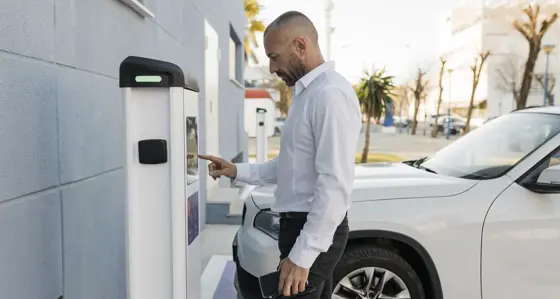
Emerging DSO market models across the globe: no regrets investments in times of uncertainty
10 February 2020
The DSO transition towards more active distribution networks is well under way. Whilst there are some strong policy and regulatory drivers for this change, much of the impetus is coming from advances in technology, rapidly changing economics in low carbon generation and storage, and the changing needs and expectations of customers.
Customers, large and small, are seeking to connect more and more assets such as rooftop solar and electric vehicles to distribution networks. To make sure there is enough network capacity to meet these new demands whilst maintaining reliability and keeping costs down, traditional distribution utilities will have to transform themselves into Distribution System Operators (DSOs) - effectively mini-versions of the Transmission System Operator (TSO) or Independent System Operator (ISO).
This creates a conundrum of how an electricity system with more than one system operator would work. Most markets tend towards some form of ‘hybrid’ model with roles for both the DSO and ISO, but differences in the underlying systems, current wholesale market arrangements, and market structures are leading to different approaches:
- Great Britain: here, there is no pool market linked to security-constrained dispatch, and the system operator acts as residual balancer. ESO (National Grid) and the 14 DSOs are exploring a co-ordinated approach to operating across transmission and distribution systems.
- Australia: the hybrid model would likely be based on a co-optimised approach. In this model, distributed energy resources (DER) and distribution level markets would be incorporated into the existing National Electricity Market (NEM). The Australian Energy Market Operator (AEMO) would act as market operator, and Australia’s distribution businesses (NEM DNSPs) would continue to be responsible for operating the networks.
- New York State (NYS): like Australia, NYS has an organised wholesale market and locational pricing. The most likely implementation of the hybrid DSO model will be based on tiered optimisation, whereby utilities optimise resources on their networks first, before residual flexibility is made available to NYISO, New York’s Independent System Operator. This slightly different approach in New York is perhaps driven by the separate regulation at State-level (for utilities) and Federal-level (for the ISO), and the more vertically integrated nature of US utilities (greater bundling of supply and distribution) than in GB and Australia.
These differences in the role of the DSO will have an impact on what information will need to be exchanged between parties, as well as timing and sequencing of network optimisation decision making. This in turn will drive the development of new capabilities and technology solutions needed by the different businesses to operate in this new environment.
Regardless of DSO market model, customer needs and attitudes are changing. This will open up opportunities for new roles in the electricity value chain - roles which will be open to incumbent utilities, and new entrants. For example, vast amounts of data will need to be shared by multiple parties in close to real-time. New technical solutions, supported by compelling commercial propositions, will be required to manage this data on behalf of consumers, protecting them from complexity and allowing them to benefit from the flexibility they provide to the system.
Whilst the DSO transition is underway, and these market models are starting to evolve, there is still significant uncertainty, and this can prevent incumbents and new entrants from moving forward. Whilst a high uptake of distributed energy resources (DER) is anticipated, current pinch points on networks are relatively isolated. The question therefore is how much investment in new capabilities should be made now? On the flip side, if network businesses are not ready, they could become a significant impediment to uptake of DER, and impact the speed of decarbonisation and achieving future net zero goals. Another unknown is the extent of customer engagement, and their willingness to adapt energy usage to save money on their bills (beyond the early adopters).
Taking all these unknowns into account, what can utilities and disruptors get started with? Regardless of the above uncertainties, utilities will need granular DER visibility; greater forecasting, data and digital capabilities; and a broader offering to give customers choice in how to connect to and use their networks. Third parties can work with utilities to help develop these capabilities and customer propositions, and test them on areas of the network with high DER uptake. These trials will help to understand better what customers want, how hybrid market models can work in practice, and the capabilities required to support the DSO transition.
Whilst there are a lot of unknowns, one thing is certain: in a decade from now, our electricity systems will be operating very differently from today.
Related Insights

Asia’s power markets: Poised for investment
Asia's electricity demand is projected to increase significantly in the coming decade, driven by increasing market and economic growth.
Read more
The future of European CfDs
Contracts for Difference have been successful at increasing competition, accelerating capability buildout and stabilising prices in many European states.
Read more
Asian LNG markets: evolution and growth in response to the war in Ukraine
The rapid reduction in Russian gas exports to Europe has resulted in an unprecedented reshuffling of LNG trade dynamics.
Read more
Commercial fleet electrification – adoption is accelerating, but barriers remain
With 50% of new car registrations in the UK being registered by businesses, it’s vital for companies to start electrifying their fleets.
Read moreIs digital and AI delivering what your business needs?
Digital and AI can solve your toughest challenges and elevate your business performance. But success isn’t always straightforward. Where can you unlock opportunity? And what does it take to set the foundation for lasting success?